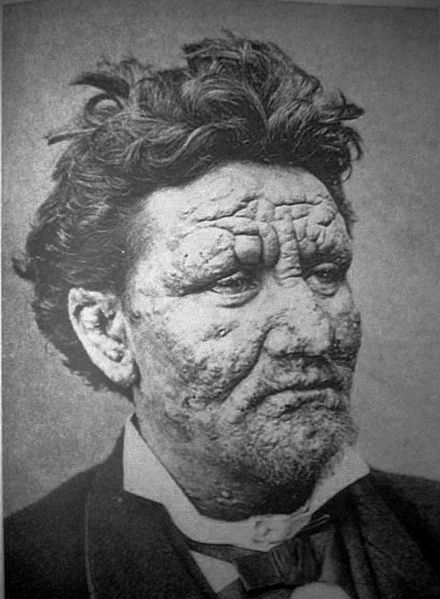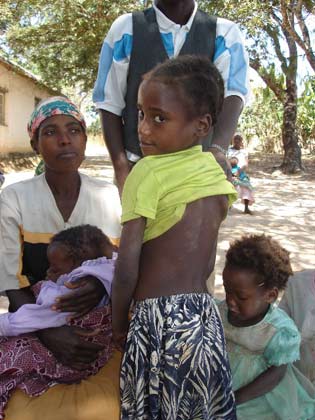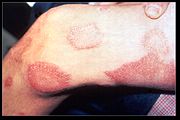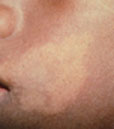Mycobacterium leprae
Symptoms of Leprosy
General Symptoms:
Hands/Feet: attacks the nerves in the hands and feet and cause them to become numb. Fingers and toes may be lost due to serious infection. Serious infections in the feet may require amputation as well. Paralysis may cause the fingers and toes to curl up permanently and be unable to function.
Eyes: attacks the nerves around the eyes causing the loss of blinking reflex (which protects the eye from injury and moistens the surface). The eyes become dry and infected, and blindness may result. Partial or complete blindness due to peripheral nerve damage may occur. Dry eyes due to decreased tear production is common.
Face: Damage to the internal lining of the nose causes scarring and eventual collapse of the nose.
Red, pink lesions on limbs, face, and back.
Disfigurement due to severe nerve damage.
Loss of sweat and oil gland functions
Numbness, loss of feeling.
Hair loss on infected lesions.
Leprosy is known to have some devastating effects. The earliest signs of leprosy are usually small lesions on the skin, some of which could look very severe, others could be only slightly unnatural; a discoloration of the skin, loss of hair on the area, or a slight numbing feeling. Gradually over time these lesions increase in size and abundance. They are found most commonly on the extremities, back, and face. These lesions become more dangerous and widespread, leading to severe nerve damage and at times loss of motor function. If this disease is left untreated, one can become paralyzed, have complete loss of feeling in the infected areas, and peripheral nerve damage resulting in partial or permanent blindness. One of the most devastating effects of this disease is the loss of feeling. Common misconceptions tell of fingers and limbs simply "falling off," which is untrue. In actuality, all sense of feeling is lost in parts of the body. After this happens, small everyday wounds can become serious issues. The person suffering does not feel the pain. Because of this, it is left untreated, often resulting in serious infection and eventual loss of the limb.
If, for example, a person suffering from leprosy sprained their ankle while tripping on a pine cone, they would be unaware that they did so. In normal, unaffected people, they would use certain techniques to aid in the healing-limping, staying off of the foot, "babying" the ankle, applying ice or heat, etc. Because they are not feeling the pain, they are unaware that they have sprained their ankle. There are no obvious physical signs such as blood. They continue to walk on it normally, increasingly stressing the injury, making it become worse and worse. Eventually, it may lead to a fracture or brake due to severe stress. In a worst case scenario, the patient could end up with a compound fracture-the bone actually tearing open the skin, causing an open lesion. In many poor countries where medical aid is unavailable, they may not get proper attention. Unsanitary conditions lead to serious infection. The end result-a loss of the limb due to amputation.
A great book:
Pain: The Gift Nobody Wants
By: Philip Yancey and Dr. Paul Brand
Check it out here:
Amazon.com: Pain: The Gift Nobody Wants: Paul W. Brand: Books




